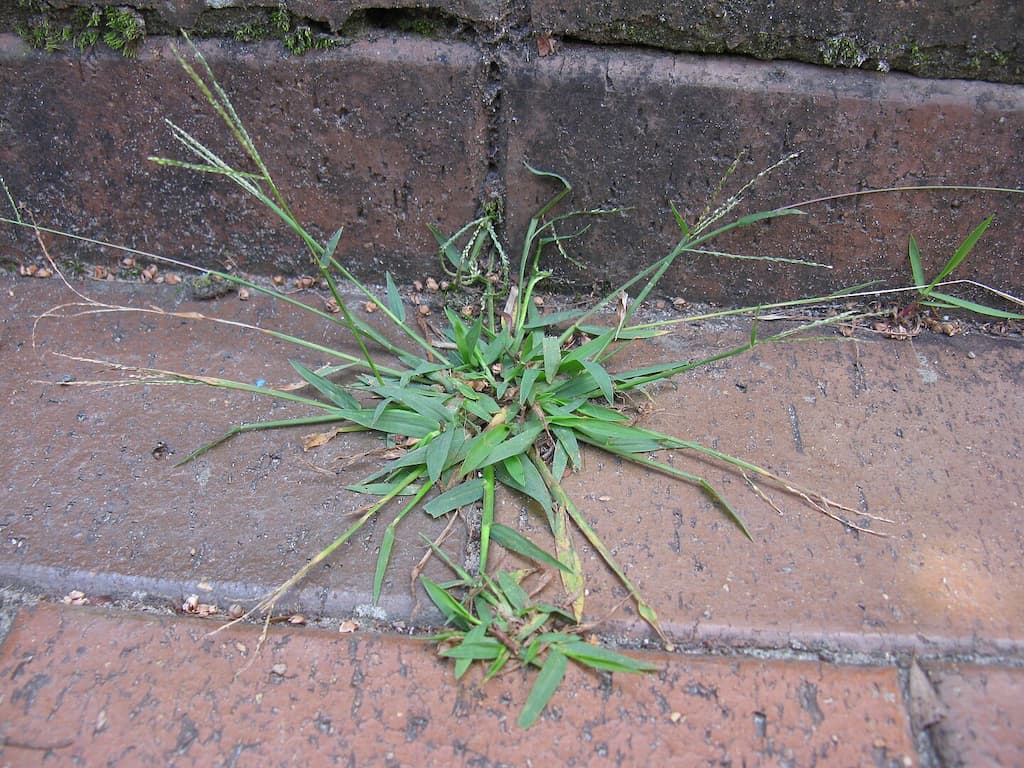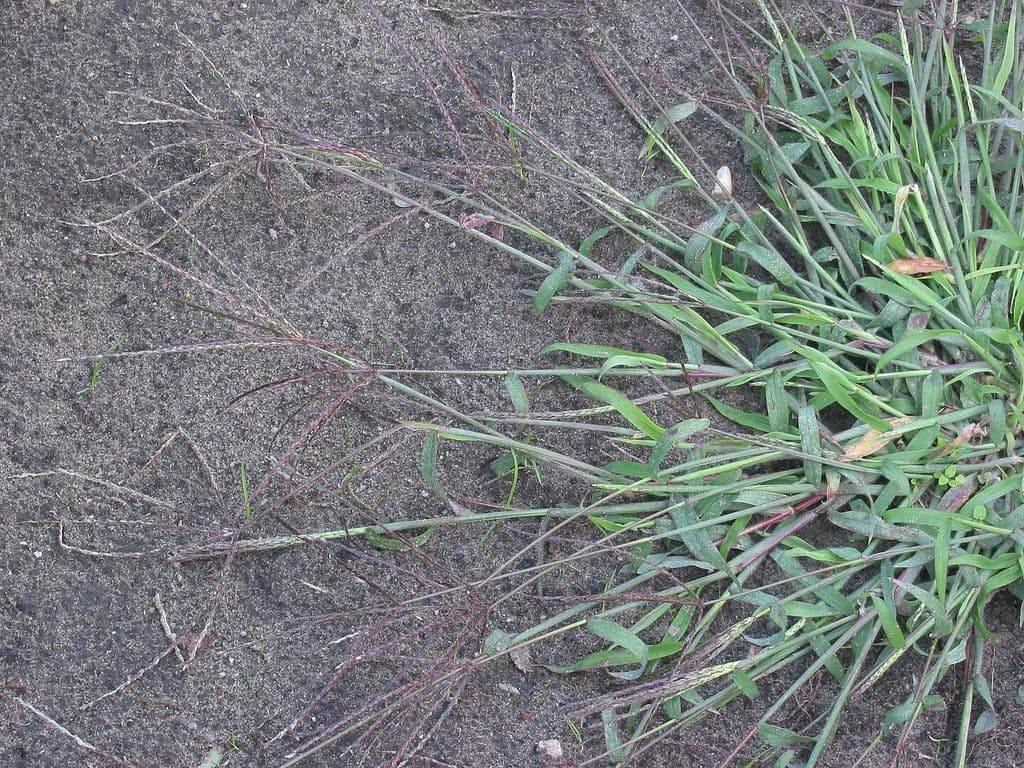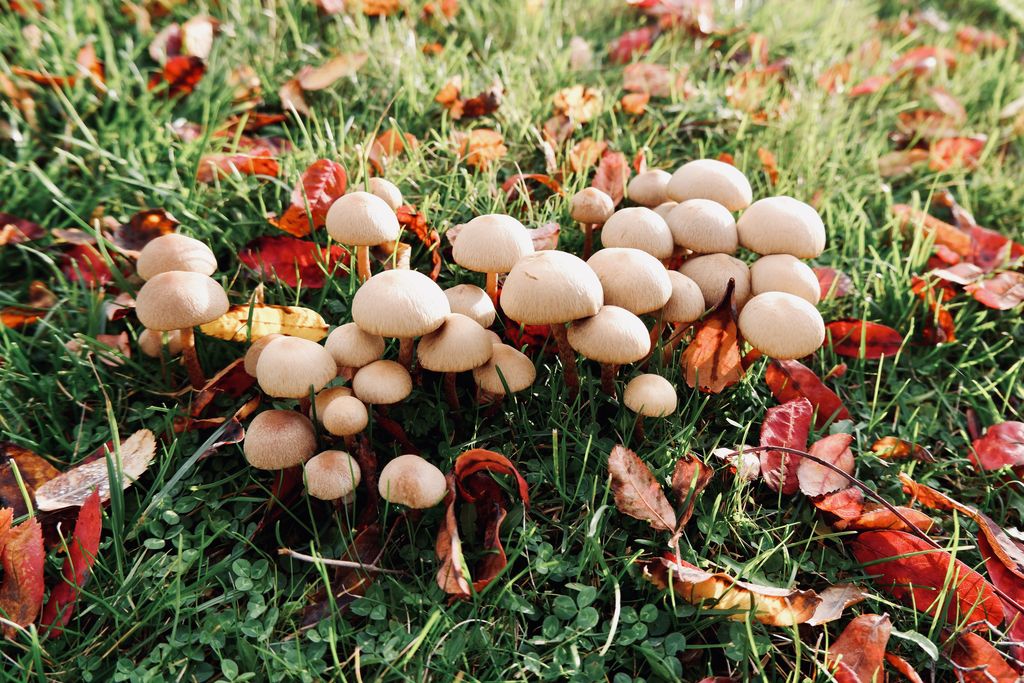Crabgrass is one of the most common and frustrating weeds homeowners face.
Its aggressive growth can quickly overtake a lawn, leaving you with unsightly patches of coarse, light-green grass.
The good news is that with the right strategies, you can manage and even prevent crabgrass from taking over your lawn. Here’s how.
This post contains affiliate links. As an Amazon Associate, I earn from qualifying purchases at no additional cost to you.
Understanding Crabgrass
Crabgrass is a common, resilient annual weed that thrives in warm sunny weather. It usually appears in late spring and continues growing throughout the summer.
Known scientifically as Digitaria, crabgrass is an unwelcome sight in lawns, gardens, and even cracks in sidewalks.
Crabgrass seeds germinate when soil temperatures reach 55°F (13°C).
The weed is prolific, with each plant capable of producing thousands of seeds, which can lie dormant in the soil for years.
Why Crabgrass is a Problem
Crabgrass is a fast-growing annual weed that can quickly take over lawns, especially in hot and dry conditions. Each plant can produce a staggering amount of seeds—up to 150,000—which allows it to spread rapidly and dominate areas where it establishes itself.
This aggressive growth leads to overcrowding, where crabgrass can smother other grass types, blocking sunlight and stealing nutrients and moisture essential for the health of your lawn. It can quickly crowd out desirable grass species, leading to a thin, weak lawn.
Additionally, crabgrass can make your lawn more susceptible to other weeds and pests.
Preventing Crabgrass (the cultural methods)
The best way to manage crabgrass is to prevent it from establishing in the first place.
Here are some effective prevention tips:
- Healthy Lawn Practices: A dense, healthy lawn is your best defense against crabgrass. Regular mowing, watering, and fertilizing will keep your grass strong and competitive.
- Mowing Height: Keep your grass at the recommended height for its type. Taller grass shades the soil, reducing the chances of crabgrass seeds germinating.
- Proper Watering: Water deeply and infrequently to encourage deep root growth. Shallow watering promotes shallow roots and favors crabgrass.
- Fertilization: Apply fertilizer according to your grass type and soil test results. Avoid over-fertilizing, as excess nitrogen can promote crabgrass growth.
Using Pre-Emergent Herbicides
Pre-emergent herbicides are a crucial tool in crabgrass prevention. These herbicides create a chemical barrier that prevents crabgrass seeds from germinating.
Apply pre-emergents in early spring, just before the soil temperatures reach 55°F (13°C)
- Timing: Apply pre-emergent herbicides in early spring, typically between mid-March and mid-April, when soil temperatures reach about 55°F. A second application about 10 weeks later can enhance effectiveness.
- Product Recommendations: Consider products like a Granular Prodiamine Pre-Emergent Herbicide Fertilizer. I recommend 2 applications in spring if the target is crabgrass, for both cool and warm-season lawns. Follow the product label for application rates and timing.
Post-Emergent Control
If crabgrass has already emerged, post-emergent herbicides can help control it. These herbicides target young, actively growing crabgrass.
For best results, apply post-emergents when the crabgrass is small and before it starts producing seeds.
Several herbicides can be used for post-emergence control of crabgrass:
- Quinclorac: Provides excellent control of crabgrass at almost any growth stage, from seedling to mature plants. It’s very safe for use on new grass seedings and can enhance broadleaf weed control when mixed with other herbicides. Product like Quintessential™ is an excellent choice.
- Fenoxaprop-ethyl: Effective on younger crabgrass, though not as effective on mature plants as quinclorac. It’s also good for controlling other grassy weeds like goosegrass.
- Mesotrione: Very effective for post-emergence crabgrass control. It’s systemic and can also control several broadleaf weeds, as well as other grassy weeds like goosegrass, barnyardgrass, and yellow foxtail.
Application Tips
- Timing: Apply herbicides when crabgrass is young, ideally at the 1-6 leaf stage with no more than two tillers. Early summer treatments are generally more effective.
- Multiple Applications: As crabgrass matures, control becomes more challenging. Multiple applications spaced 2-3 weeks apart may be necessary for effective control.
- Mowing: Avoid mowing 2 days before or after herbicide application.
- Watering: If soil is dry, irrigate before application. Avoid watering for 24 hours after application, then apply 1/2 inch of water 2-7 days later if no rainfall has occurred.
- Temperature: Do not broadcast apply when temperatures are above 90°F, as this can cause temporary turfgrass discoloration.
Be sure to follow the product instructions to avoid damaging your lawn.
Manual Removal

For small infestations, manual removal can be an effective method, especially for small infestations.
Here’s a comprehensive guide on how to do it:
Tools Needed
- Weeding Tool: A dedicated weeding tool, such as a hand weeder or a ProPlugger, can help extract the entire plant, including its roots.
- Gardening Gloves: Protect your hands while pulling weeds.
Steps for Manual Removal
- Identify the Crabgrass: Look for the characteristic clumps of crabgrass, which typically have wider leaves than traditional turfgrass and can appear light green to yellowish-green.
- Moisten the Soil: If the soil is dry, lightly water the area before removal. Moist soil makes it easier to pull out the roots without breaking them.
- Pulling the Weeds:
- Grasp the base of the crabgrass plant firmly.
- Use your weeding tool to dig around the base if necessary, ensuring you get as much of the root system as possible.
- Pull the plant straight up to minimize the risk of breaking the roots, which could lead to regrowth.
- Dispose of the Weeds: Place the removed crabgrass in a trash bag to prevent any seeds from falling back into your lawn and germinating.
- Monitor for Regrowth: Regularly check the area for any signs of regrowth and remove any new plants immediately.
Manual removal is labor-intensive but can be very effective for small patches of crabgrass.
For larger infestations, combining manual removal with other control methods, such as herbicides, may be necessary for a complete eradication.
Overseeding and Lawn Repair
Bare spots and thin areas in your lawn are prime locations for crabgrass to establish.
Overseeding helps fill in these gaps, making it harder for crabgrass to take hold. Choose a grass seed that is suitable for your climate and lawn conditions. There are good and inexpensive bare spot patching solutions available, like Black Beauty Patcher.
Early fall is the best time for overseeding, as cooler temperatures and ample moisture promote seed germination.
Monitoring and Maintenance
Regularly inspect your lawn for signs of crabgrass. Early detection allows for timely intervention before the weed becomes a significant problem.
Maintain a consistent lawn care routine, including mowing, watering, and fertilizing, to keep your lawn healthy and competitive.
Comparing Strategies
The best way to control crabgrass is to use a mix of methods: apply pre-emergent herbicides in spring, maintain your lawn, and treat any crabgrass that appears with post-emergent herbicides or by pulling it out. This approach stops crabgrass now and prevents future problems.
| Strategy | Best For | Limitations |
|---|---|---|
| Pre-Emergent Herbicides | Prevention | Ineffective on existing plants |
| Post-Emergent Herbicides | Young plants | Less effective on mature plants |
| Cultural Methods | Long-term prevention | Slow to show results |
| Manual Removal | Small areas | Labor-intensive |
| Chemical Herbicides | Large infestations | Potential environmental impact |
The Bottom Line
Managing crabgrass in home lawns requires a combination of prevention, timely interventions, and regular maintenance. By following these strategies, you can keep your lawn healthy, dense, and crabgrass-free.
Remember, a proactive approach is always more effective than reactive measures. Happy lawn care!
F.A.Q
What is Crabgrass?
Crabgrass (Digitaria spp.) is a type of annual grassy weed that grows in home lawns, particularly in warm and temperate climates. It is a common problem in lawns with poor soil quality, inadequate mowing, and excessive sunlight.
How does Crabgrass spread?
Crabgrass spreads through seeds, which can be dispersed by wind, water, or human activity. It can also spread through underground rhizomes, which allow it to quickly colonize new areas of the lawn. Crabgrass can also grow from small pieces of rhizome that are left behind after mowing or other lawn maintenance activities.
How can I prevent Crabgrass from growing in my lawn?
To prevent Crabgrass from growing in your lawn, maintain a healthy and dense turf through proper mowing, watering, and fertilizing practices. Keep your lawn at a height of 3-4 inches, as this can help shade out Crabgrass seeds and prevent them from germinating. Additionally, use a pre-emergent herbicide in early spring to prevent Crabgrass seeds from germinating.
How can I control Crabgrass in my lawn?
To control Crabgrass in your lawn, use a post-emergent herbicide in late spring or early summer when the Crabgrass is actively growing. You can also use a combination of physical removal and cultural practices to control Crabgrass. For example, you can manually remove Crabgrass plants by digging them up or using a tool to cut them off at the soil surface. Additionally, improve soil quality and reduce shade to make it less hospitable to Crabgrass growth.
Can I use a lawn mower to control Crabgrass?
While a lawn mower can help control Crabgrass by cutting it off at the soil surface, it is not a reliable method for controlling the weed. Crabgrass can regrow quickly from small pieces of rhizome left behind after mowing, and repeated mowing can actually spread the weed further. Instead, use a combination of physical removal, cultural practices, and herbicides to effectively control Crabgrass in your lawn.



